UMMC patient celebrates 50th anniversary of congenital heart repair
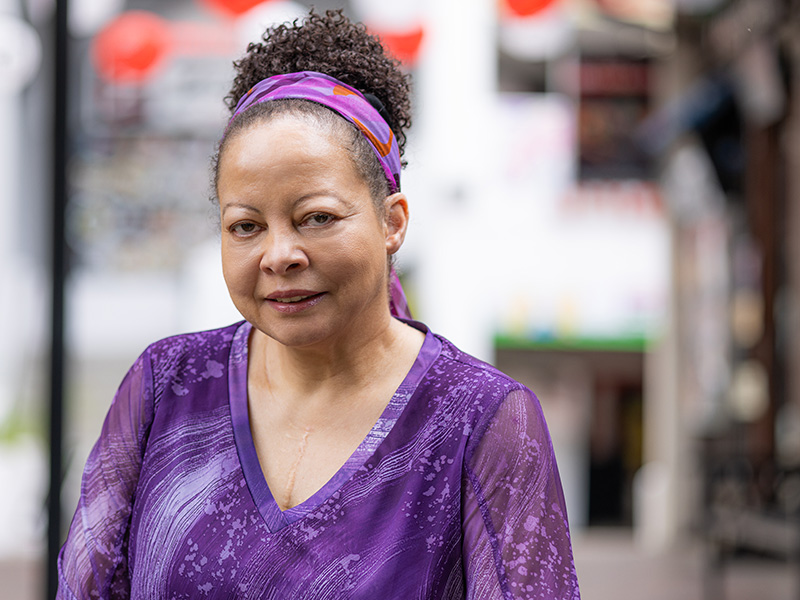
Harrion, now an art director, animator and designer in Burbank, California, was born with a ventricular septal defect, or VSD, discovered when she would need to lie down in the school nurse’s office after feeling and looking sick during class at Dawson Elementary in Jackson. Her mother, Helen Harrion, had taken her to the University of Mississippi Medical Center’s children’s clinic on Lakeland Drive in 1973.
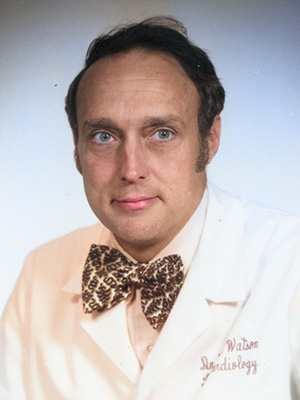
Wanting the best for her daughter, Helen Harrion had considered taking Monica to Dr. Michael DeBakey, a pioneering heart surgeon, “but we would have had to go to Texas.”
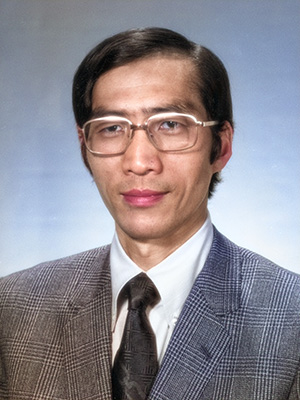
“Dr. Suzuki was an excellent surgeon,” said Dr. James Joransen, who joined Watson at UMMC in 1972. Watson, who was born in Toronto, Canada, died in 2020 at 91.
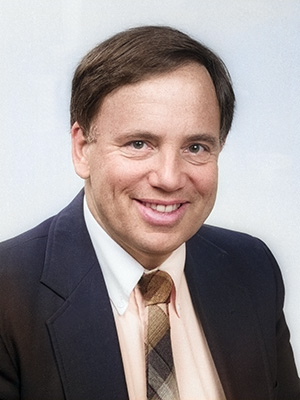
Three days before her surgery, Harrion was admitted in the children’s hospital, which was built in 1968. The circular layout of the hospital floor made for a racetrack for her and other patients.
“I remember that two other patients and I would sneak out of our beds at night and try to get to wheelchairs to race,” she laughed. “The nurses would scold us and plead with us to go back to bed. And we did.”
After surgery, Harrion remembers waking up in the pediatric intensive care unit. “I was so hungry,” she said, “and I couldn’t have anything except ice chips and juice.”
Her ventricular septal defect, a hole in her heart, had been patched with Gore-Tex, a durable material that’s also used to make rain jackets.
“I still have the wire that was used to close my sternum in my chest,” she said.
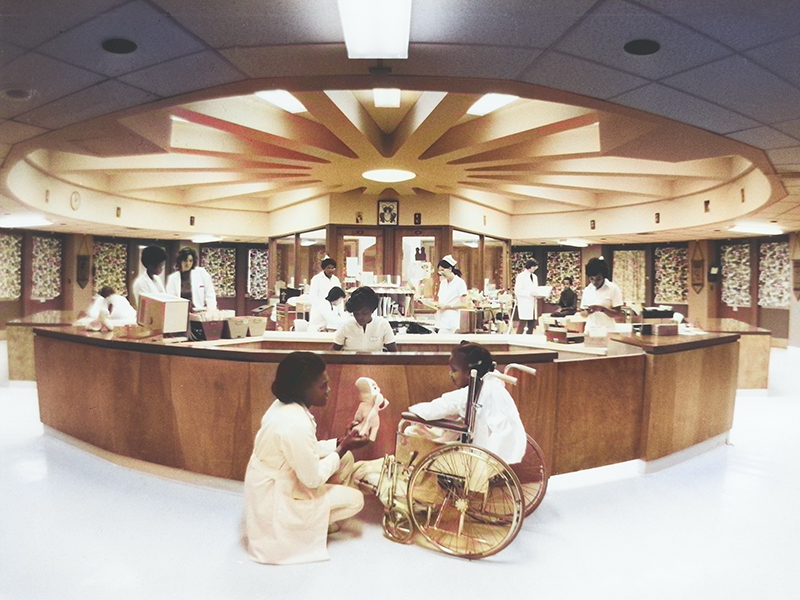
Harrion was discharged from the hospital on Easter Sunday. “The first thing I did after I got home was to make hearts from Playdoh.”
UMMC was among medical centers around the world that were making strides in pediatric cardiology in the 1970s, Joransen said.
“During the early 1970s, significant advances were made in the angiography of congenital heart disease,” he said. Angiography is a type of X-ray used to check blood vessels.
“This allowed for more accurate diagnosis of the position of the VSD and allowed the surgeon to more accurately plan the surgery. This contributed to a decrease in operative morbidity and mortality. At the same time, ultrasound was being developed, which allowed for noninvasive diagnosis of many abnormalities. It was a truly exciting time in the field of congenital heart disease.”
Those advances let Harrion grow to adulthood and continue her education, first at the University of Southern Mississippi and then at Jackson State University, where she earned a degree in art with an emphasis in graphic design. An interest in animation drew her to California, where she earned a degree in digital media from Otis College of Art and Design.
Her visual effects work can be seen in the 3D versions of “Titanic,” “Captain America: The First Avenger,” and “The Avengers.” Harrion’s animation credits include work on “Batman: The Brave and the Bold” and “Lego: The Adventures of Clutch Powers.”
For the past decade, she’s been an animator for JibJab Bros. Studios, known for its customizable animation videos and e-cards.
Though Harrion’s in good health, she takes precautions such as taking an antibiotic before going to the dentist to avoid infective endocarditis. The condition, an infection of the heart, is rare, but adults with congenital heart disease can be at a higher risk of contracting it.
“I just know I need to protect my heart,” she said.
When she was 5, Harrion’s father, Samuel W. Harrion, Sr., died from an aneurysm that resulted from endocarditis from a dental treatment. As a child, he had gotten rheumatic fever that was never treated.
After his death, Samuel Harrion’s father, James Otis Harrion Sr., discussed the cause of the aneurysm with the attending cardiologist at Baptist Hospital, who was also the president of the Mississippi Medical Association in 1971. The elder Harrion then made a plea for antibiotic treatment for those receiving dental care who had been diagnosed with rheumatic fever.
“As a result of the outcome of Samuel’s case, a collaborative protocol was developed between the medical and dental boards,” she said. “His death is the reason I take antibiotics since my surgery.”
Thanks to breakthroughs in treatment of congenital heart conditions such as Harrion’s, there are more adults living with congenital heart disease, or CHD, than children. Congenital heart conditions are the most common type of birth defect, occurring in about one in every 100 births.
The U.S. Centers for Disease Control and Prevention reports that about 40,000 children are born with congenital heart conditions each year. More than 2.4 million Americans, adults and children, live with congenital heart disease, the CDC estimates.
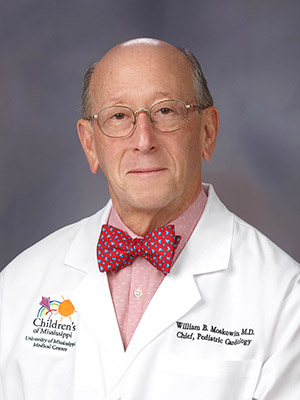
UMMC is still providing care for CHD. The Children’s Heart Center cared for almost 10,000 individuals just last year alone at the Kathy and Joe Sanderson Tower at Children’s of Mississippi, said Dr. Bill Moskowitz, chief of pediatric cardiology and co-director of the Children’s Heart Center.
“Many of these children required more than just an outpatient visit. Some need outpatient testing, cardiac catheterization procedures or open-heart surgery, even as a newborn. We follow patients from before birth into young adulthood and transition patients into the Adult Congenital Heart Program at a time appropriate for each patient.”
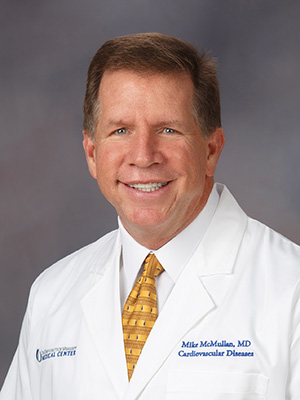
Dr. Mike McMullan, director of the Division of Cardiology at UMMC and the Medical Center’s Adult Congenital Heart Program, encourages adults with CHD in their medical histories to get a check-up for their heart health.
“We have a large and growing population of adult congenital heart disease patients,” McMullan said. “Some adults’ CHD was diagnosed before they were born or in infancy, while others were diagnosed as children or even in adulthood. Adults who have been treated for CHD at any time in their lives need monitoring and care to avoid complications and live healthier lives.”
If a patient has a family member with congenital heart disease, they should also be evaluated as many congenital heart conditions are genetic.
UMMC’s Adult Congenital Heart Clinic accepts self-referrals. Call 601-984-5678 and choose option 2 and then option 5 to schedule an appointment. Submit an online appointment request at umc.edu/achd.


